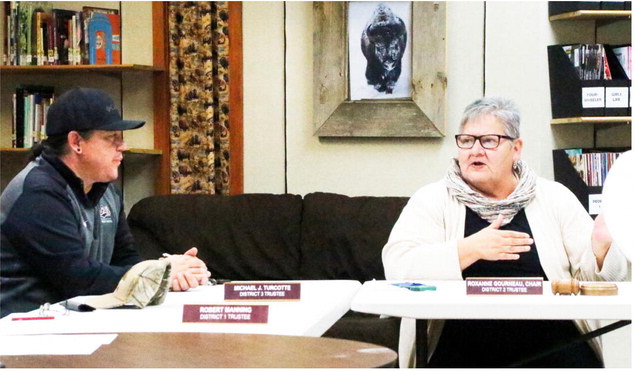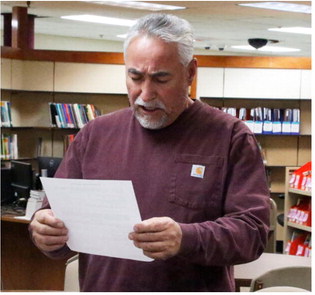Democrats Gain Ground In Legislature, But GOP Still Holds Power
Republicans will continue holding strong majorities in both chambers of the Montana Legislature when next year’s session starts in January but will no longer have a veto-proof supermajority after Democrats picked up a handful of seats following redistricting and Tuesday’s election.
While Tuesday’s election results are not yet finalized, tentative results with about 560,000 votes counted statewide show Democrats picking up two seats overall in the Senate and nine in the House.
That would put Republicans at a 32-18 majority in the Senate and a 59-41 majority in the House. In 2023, Republicans carried a 34-16 majority in the Senate and 68-32 majority in the House.
That’s about in line with what both parties had forecast both before and after the primaries in June. Republicans expected to have around 30 Senate seats, while Democrats had hoped to pick up three or four seats in the Senate and eight to 10 in the House.
In the Senate, both parties had kept close tabs on three races seen as toss-ups: Senate District 2 in the Flathead Valley; Senate District 21 on the Crow and Northern Cheyenne reservations; and Senate District 24 in Billings.
Rep. Dave Fern, D-Whitefish, was able to win the seat for Democrats in Senate District 2, defeating Republican Doug Adams 52% to 48%.
But Republicans won the two other seats. Republican Gayle George Lammers defeated Rep. Sharon Stewart Peregoy, D-Crow Agency, 57% to 43% as of early Wednesday afternoon in Senate District 21. And Rep. Mike Yakawich, R-Billings, won Senate District 24, 54% to 46% over Democrat Mark Nicholson.
“Sens. Yakawich and Lammers pulled off major victories in those tough districts last night and are a major reason why we’re heading into the 2025 session with such strong majorities,” Senate President Jason Ellsworth, R-Hamilton, said in a statement.
Senate Republicans spokesperson Kyle Schmauch said Republicans were pleased with how hard the two candidates had worked, and said they had earned their wins. He said Adams’ loss to Fern was the only other seat Republicans thought they might be able to take.
“But Dave Fern is a very strong candidate for Democrats and very well-known and liked in that area,” he said.
Schmauch said he believed that losing the supermajority would mean little during the 2025 session because the same measures that passed with a supermajority would still pass with a large, but slightly smaller, majority.
“By definition, there can’t be a discernible difference from last session because nothing happened last session that took a supermajority to accomplish,” he said. “As far as working with the governor and whatnot, every session is completely different in its own way, but it won’t be based on numbers. It’ll be based on personalities and the specific individuals that are serving in each chamber.”
Senate Democrats spokesperson George Wolcott said the caucus was pleased with Fern’s victory, especially in an election in which most of the electorate in Montana moved further toward supporting Republicans, who swept every statewide race.
“It was a hard night across the board, but it wasn’t without some high points like that,” he said.
Wolcott said that Democrats simply holding more seats than during the 2023 session should help their chances of passing bills they support in 2025, chief among them extending Medicaid expansion in Montana, which is expected to be one of the more contentious issues of next session.
“I’m happy for that, and I think that we’re going to have a good crew ready to do some good work and be ready to represent folks in Helena this upcoming session,” he said.
In the House, incumbents held strong even in some of the more contentious districts, and Democrats netted nine overall seats — about what they said they expected following redistricting. There are remaining votes left to be counted in Yellowstone and Gallatin counties as of early Wednesday afternoon, but most races in those counties were separated by enough votes they were unlikely to flip in the final tally.
Evangeline Lancette, a spokesperson for House Republicans, said she had not dug deeper into the results, but they were about what Republicans were expecting as well.
“I think there’s a relatively good feeling about how it’ll turn out, and I think that pretty much it’s what was kind of expected,” she said.
Scott McNeil, director of the Montana Democratic Legislative Campaign Committee, said the results showed Montana rejected having a Republican supermajority in power. “Despite the disappointing results, Montanans made it clear on Tuesday that they wanted to rein in a Republican supermajority that was focused on getting involved in their personal lives and not on the issues they care about. Montana Democrats are ready to get to work on what they campaigned on, taking on the rising cost of living, renewing Medicaid expansion, and fighting for everyday Montanans.”
Rob Saldin, the director of the Mansfield Ethics and Public Affairs Program at the University of Montana, said the changes to the makeup are largely due to redistricting.
“You can’t really compare to two years ago, the pickups are almost entirely a function of new district lines out of the reapportionment process,” he said. “That said, Democrats do have some seats and maybe even did slightly better than one might have thought.”
As it stands and if current forecasts hold once the election results are finalized, the makeup of the Legislature would be identical to that of the 2017 body, which also had a 59-41 split in the House led by Republicans, and a 32-18 split in the GOP-led Senate.
The four respective caucuses will meet at the capitol this week for caucus meetings and to elect their leadership for the session and biennium. The spokespersons said there would be multiple people competing for the top position in each caucus except for Senate Democrats, who are expected to elect Sen. Pat Flowers, D-Belgrade, as minority leader again.

